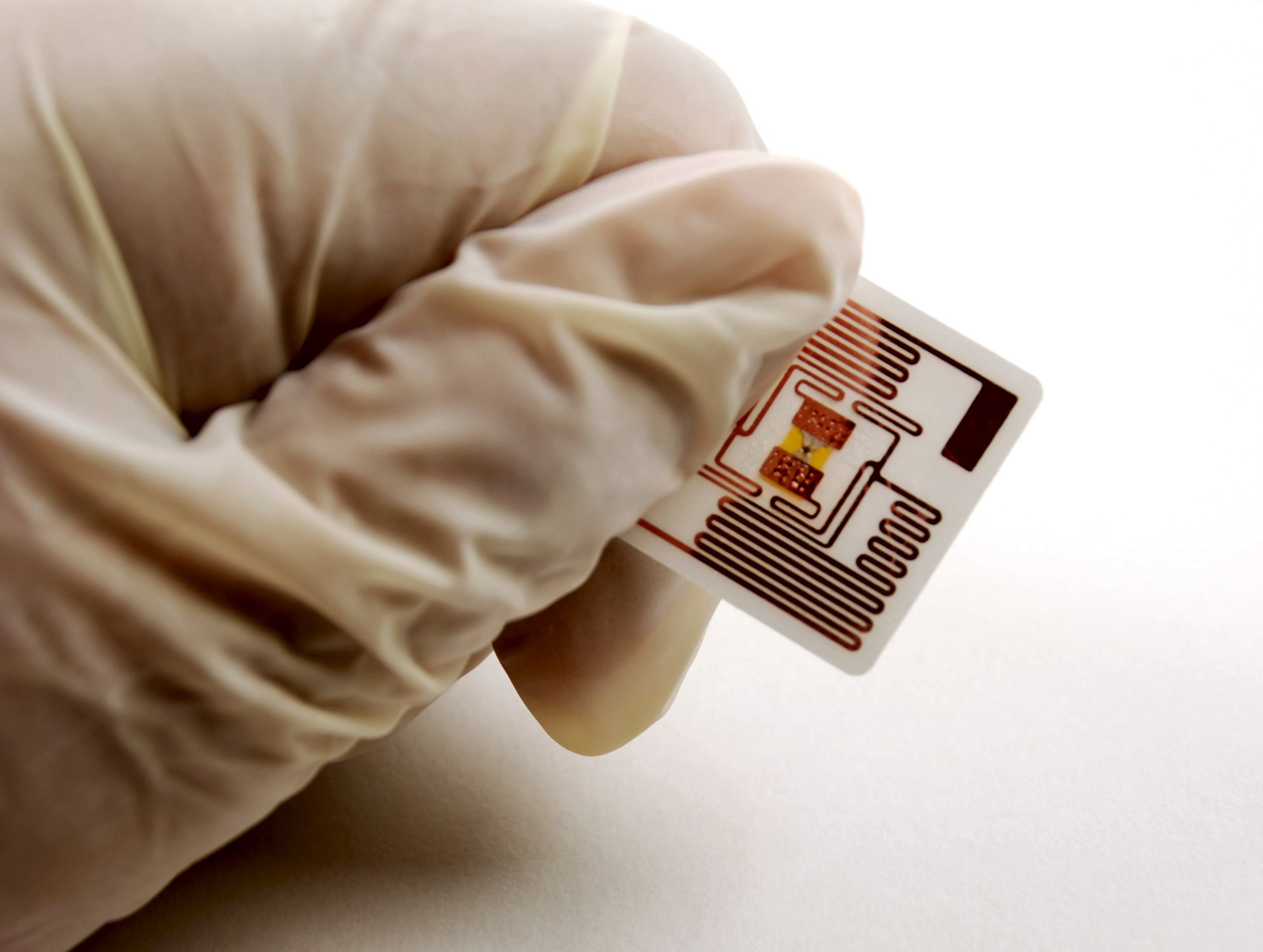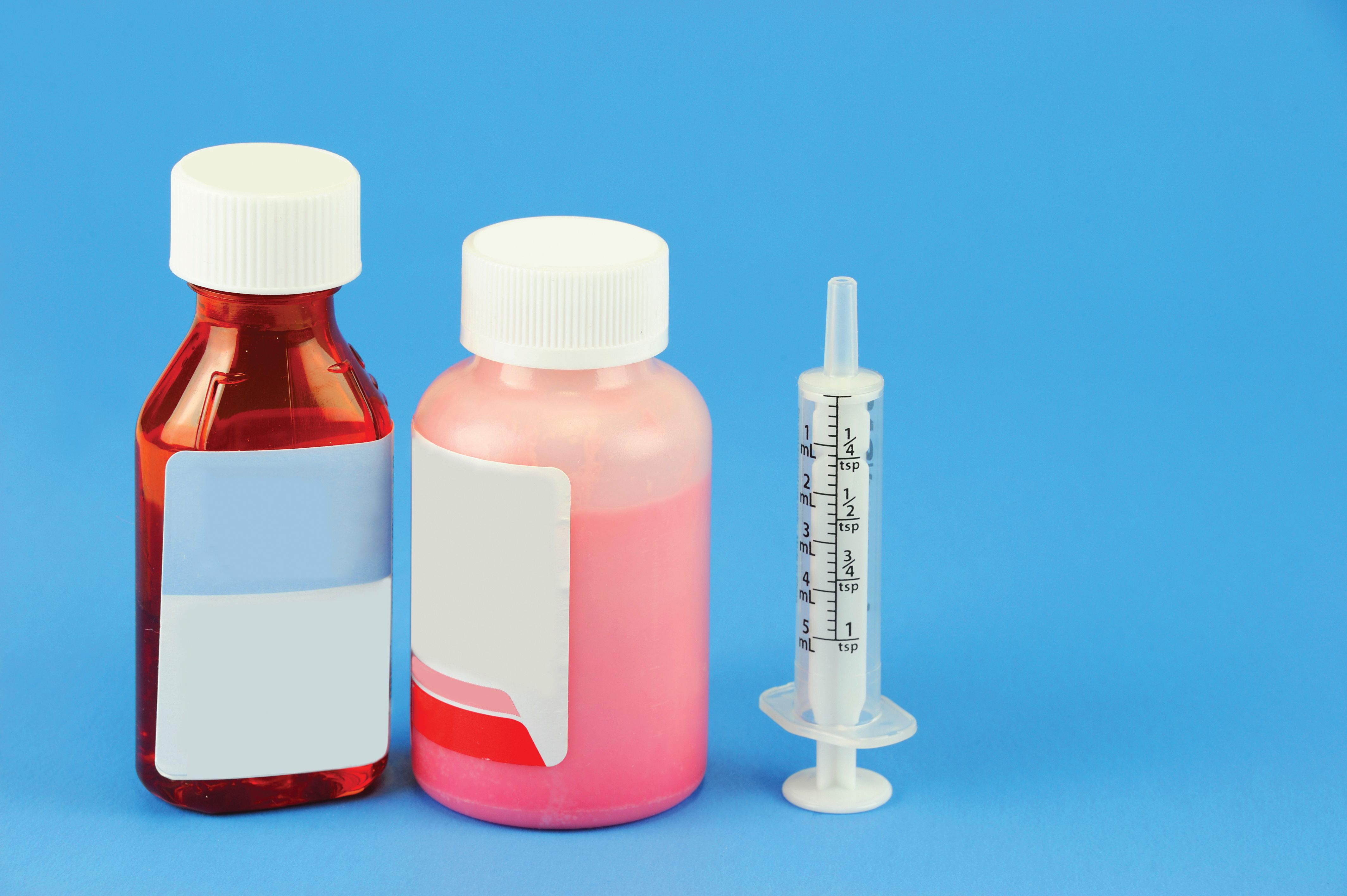Publication
Article
Pharmaceutical Technology
Innovation in Equipment and Machinery
Author(s):
Results from Pharmaceutical Technology's Equipment and Machinery Trends survey and industry members provide insight into product innovation
To gauge the level and type of innovation for machinery and equipment for the pharmaceutical industry, Pharmaceutical Technology assembled a roundtable of experts in various fields to share their insights.
Participating in the roundtable were: Richard Denk, director of the pharmaceutical department for Hecht Anlagenbau (Pfaffenhofen/Ilm, Germany); Dieter Forthuber, division president of KMPT USA (Florence, KY); Craig Martin, product manager at Dwyer Instruments; (Michigan City, IN); Bruce Smith, regional manager at SPX Process Equipment (Delavan, WI); Christopher Fournier, vice-president of Mar Cor Purification (Lowell, MA); and Grant Rowe, product manager, respiratory protection, Bullard (Cynthiana, KY).
Bulk solids handling
Q: Industry-wide, what would you identify as the current leading trends in product innovation for equipment for bulk-solids handling? What factors are driving the changes?
Denk: Flexibility in bulk-solid handling is the leading trend of product innovation. In the past this focused on one system, for example a sack and unloading device ordered and installed. Now the requirements dictate that the bulk-solid loading and unloading station should be used to load and unload sacks, bags, different types of drums, super sacks, and intermediate bulk containers without any restriction on different containment levels to reach. The reason for this required flexibility is the manufacturer of the bulk solids wants a multi-purpose facility for handling his current materials (which may be a raw material or an intermediate) with the flexibility to handle different products (yet to be determined) in the future that have more stringent containment requirements. Products are purchased worldwide, and the packaging materials varies between suppliers. Contract manufacturers require this flexibility in the equipment selection since they work for different companies with differing product characteristics.
Q: Industry-wide, what you identify as the most significant development over the past two years in product innovation for equipment for bulk-solids handling?
Denk: Flexible disposable technologies, such as flexible intermediate bulk containers (FIBCs), are becoming more common for handling products in the active pharmaceutical ingredients and pharmaceutical industries. FIBCs can be filled and discharged with containment levels (measured in μg/m3) that previously could only be attained with the use of isolators. Another big advantage of FIBCs is they don't have to be cleaned after use. Cleaning requirements are becoming more and more important, especially in multipurpose applications. For certain materials, such as steroids, hormones, cytotoxic, and teratogenic products, there is no cross-contamination or cross-mixing allowed. The cleaning validation of the packaging material for these types of bulk solids is impossible. Flexible disposable technologies offer the most cost-effective solution in these cases.
Q: Industry-wide, what are the current leading trends in product innovation for solids–liquids separation? What factors are driving the changes?
Forthuber: Combining mechanical and thermal solids/liquid separation into one processing unit or providing automatic, completely contained product transfer between mechanical and thermal machines.
Improving mechanical solids/liquid separation by means of applying pressure and/or employing special membrane technology (e.g. cross-flow filtration) to enhance the filtration capability for very fine particle sizes.
Improving vacuum drying by intensifying product transport and mixing for shorter drying times without the risk of particle degradation.
"Clean" designs: fewer moving parts and surfaces (reducing dead spaces) in the process area; crevice-free design, surface finish for less risk of product residues; and complete discharge (higher yield) and better cleanability.
Continuous processing instead of batch processing. Control and reliability of the process will be the key factor in moving to continuous processing.
New or improved sensor technology to provide touch-free measurements of operating parameters. Examples include ultra-sonic measurement and acoustic measurement for filtration centrifuges.
Q: Industry-wide, what you identify as the most significant development over the past two years in product innovation for equipment for solids–liquids separation?
Forthuber: Development of small "kilo-lab" sized pharmaceutical centrifuges and dryers for potent active pharmaceutical ingredient pilot and semiproduction-scale operations. The hurdle has been developing small-scale centrifuges and dryers that mimic the large production models in operation and function. KMPT has been able to achieve this with the introduction of a small pilot-scale pharma peeler centrifuge as well as laboratory–pilot scale conical mixer and helical-type dryers, in which small units (operating volumes down to 2 L) have been developed with functional operation identical to large scale models.
Controls and measurement
Q: Industry-wide, what would you identify as the current leading trends in product innovation in instrumentation for measuring pressure, flow, air velocity, and temperature? What factors are driving the changes?
Martin: The continued expanded offering of digital instrumentation allows for greater flexibility such as simplified field calibration and menu-driven programmability that allows the user to customize the instrument to meet their application's demands. Some examples of this digital customization are the ability to select operation mode, engineering units, or even range selection. Along with memory chip and electronic component cost reduction, globalization is a leading reason for this trend as we have a global customer base and it is more economical to make one style product with this flexibility than to make various models designed to function in a particular local market.
Q: Industry-wide, what would you identify as the most significant development over the past two years in product innovation in instrumentation for measuring pressure, flow, air velocity, and temperature?
Martin: The costs for sensors continues to drop allowing for analog gages and switches to be more justifiably replaced with transmitters. Also, the combination of products into one simplifies installation and lowers cost by providing one product to do the job that once took two or three separate products to fulfill.
Thermal equipment, test and measurement, and flow technology
Q: Industry-wide, what would you identify as the current leading trends in product innovation, respectively, for thermal equipment, test and measurement, and flow technology for pharmaceutical or biopharmaceutical applications? What factors are driving the changes?
Smith: As an equipment manufacturer, we see the demands for documentation of material content and testing becoming more and more stringent. This is especially true for elastomers where we've seen a growing concern about leaching. The metallurgy of the stainless steel used in our equipment has also come under increased scrutiny as customers address concerns about rouging, corrosion, and casting imperfections.
Q: Industry-wide, what would you identify as the most significant development over the past two years in product innovation for thermal equipment, test and measurement, and flow technology for pharmaceutical or biopharmaceutical applications?
Smith: We see the European hygienic standards, particularly the European Hygienic Engineering & Design Group (EHEDG) becoming more influential as pharmaceutical companies take an increasingly global view. EHEDG affects product design in regard to cleaning. We are also encountering more and more references to the American Society of Mechanical Engineers' Bioprocessing Equipment standards in equipment specifications.
Water purification and disinfection
Q: Industry-wide, what would you identify as the current leading trends in product innovation, respectively, for the following: water for pharmaceutical applications, filtration, and disinfection? What factors are driving the changes?
Fournier: The pharmaceutical industry has been moving to more standardized water system designs to reduce total procurement costs, reduce time of procurement, increase reliability, and provide for a faster validation of the systems. Previously, water-system procurement was an expensive, lengthy process that often resulted in delays in commissioning facilities, and produced a custom design that was difficult to validate. The industry is now very receptive to manufacturers' standard single-skid designs.
For filtration and disinfection control, microbiological removal continues to be a key area for emphasis in all phases of manufacturing and research. The drive to increase yields and reduce costs of manufacturing have continued to play a factor in new product development for filters and sterilants. Recent news about methicillin-resistant staphylococcus aureus (commonly referred to as MRSA) outbreaks, control of bacteria in hospital settings, and environmentally safe disinfection procedures are the most visible of the marketplace drivers.
Q: Industry-wide, what you would identify as the most significant development over the past two years in product innovation for the following: water for pharmaceutical applications, filtration, and disinfection?
Fournier: For pharmaceutical water, as previously mentioned, the need to drive cost and reduce lead times has been significant. The use of ozone for sanitizing distribution loops has also been a big shift in design. I think the main driver has been the need to reduce costs without compromising reliability or quality.
For filtration, more durable materials of construction to address solutions in contact while maintaining high filtration efficiencies has been the most significant. By this I mean that filters need to be able to hold up under ozone sanitization, heat contact with solvents, with tighter performance qualities.
For disinfection, there are a number of factors driving this area. As earlier mentioned, the need for broader disinfection techniques in many situations is increasing. Also influencing the development is a movement away from hazardous chemicals for disinfection to more environmentally safe chemistries. For example, in Europe, the use of a common disinfectant, formaldehyde, has been banned. In many pharmaceutical operations, regular disinfection of rooms and hoods and manufacturing areas is critical.
Personal protection equipment
Q: Industry-wide, what would you identify as the leading trends in product innovation for protection equipment for pharmaceutical or biopharmaceutical applications? What factors are driving the changes?
Rowe: Two of the trends (with regards to my type of products) that I've been observing are: moving from supplied air respirators (SARs) to powered air-purifying respirators (PAPRs) and the trend toward requiring the Tychem hood components of our respirators to be sterilized. The drivers for the first trend include: the desire to work without being tethered to an air-supply hose and a greater acceptance of PAPRs for higher levels of protection because of improved PAPR technology. The drivers for the second trend is the emergence of pharmaceutical and biopharmaceutical products that are too delicate to withstand terminal sterilization and now require aseptic processing.
Q: Industry-wide, what would you identify as the most significant development over the past two years in product innovation for protection equipment?
Rowe: The number of PAPR choices for pharmaceutical customers has really grown in the past two years. More manufacturers are entering the market, battery technology has really improved, and customers are demanding higher quality.
Product innovation snapshot: the importance and source of innovation
How significant is innovation when making a purchasing decision for pharmaceutical machinery and equipment? To gain a perspective, we asked participants in Pharmaceutical Technology's Equipment and Machinery Trends Survey that very question, and the results showed that innovation was indeed important. Fourteen percent of respondents say innovation is extremely important in influencing their decision to buy equipment and machinery, 41% say it is very important, and 43% say is somewhat important (see Figure 1). Only a small percentage (2.4%) say innovation is not important.

Figure 1.
We also wanted to know how the respondents learned about product innovation. Nearly one-third (32.3%) said that equipment and machinery vendors were their primary source for learning of product innovation and more than one-quarter (28.5%) said that trade shows were their primary source. Other principal sources for learning of product innovation were advertisements (nearly 15%), and editorial information and reports (13.9%). Only 7.6% said that "word of mouth" was a primary source.
Product innovation snapshot: high level of product innovation
To gain a perspective on the type of product innovation, we asked participants in Pharmaceutical Technology's Equipment Machinery Trends Survey to rank the pharmaceutical industry's level of product innovation during the past two years (2006 and 2007) for various equipment types.
Respondents rate recent product innovation highest in machinery and equipment for process control and automation (25.5% rated it as high), laboratory equipment (24.0%), quality assurance and quality control (23.1%), and manufacturing active ingredients (22.8%).
Respondents also gave medium rankings to these equipment areas, with roughly half of the respondents rating the level of innovation as medium over the past two years (2006 and 2007). For process control and automation, 49.1% rated the level of automation as medium, and 48.4% did so for laboratory equipment. More than half (51.2%) rated innovation for machinery and equipment for quality assurance and control as medium, and 44.9% did so for equipment for active pharmaceutical ingredient manufacturing.
Product innovation snapshot: low level of product innovation
Pharmaceutical Technology's Equipment and Machinery Trends Survey also wanted to determine in which equipment types innovation was viewed as low during the past two years (2006 and 2007).
Machinery and equipment for environmental control, solid-dosage manufacturing, cleanrooms, packaging, and parenteral manufacturing were the areas that ranked the lowest in product innovation. Respondents ranked innovation for machinery and equipment for environmental control as low (31.5%), and 6.7% of the respondents said there was no product innovation in this area over the past two years.
Almost one-third of respondents (29.3%) ranked innovation for equipment and machinery for solid-dosage manufacturing as low, and 11.5% said there has been no product innovation in this area over the past two years.
More than a quarter (28.1%) said innovation in cleanroom equipment was low, and 9.6% said there has been no product innovation in this area during 2006 and 2007. Equipment for packaging was also regarded as an area of low innovation. More than one quarter (26.1%) of the respondents to the survey ranked innovation in this area as low, and 5.6% said there was no innovation for packaging equipment and machinery during the past two years.
Innovation for machinery and equipment for parenteral manufacturing and aseptic or sterile processing also ranked fairly low. Nearly a quarter (23.4%) said that innovation in this area was low during the past two years, and 9.3% of respondents said there has been no innovation.
On a positive note, however, nearly half (51.3%) ranked innovation for parenteral manufacturing as medium, and 16.0% ranked it as high.
Product innovation snapshot: penetration of innovation into the marketplace
Pharmaceutical Technology's Equipment and Machinery Trends Survey evaluated whether innovative products launched in 2007 made it into the mainstream marketplace.
Forty-three percent of respondents said there were innovations, launched as new products in 2007, that made it into the mainstream marketplace. Surprisingly, more than half of the respondents (57.0%) said that there were innovations, launched as new products in 2007, that did not make it into the mainstream marketplace.
What innovations were not widely adopted into the marketplace in 2007 according to survey respondents? Respondents identified the following:
- Applications for process analytical technology
- Encapsulation technology
- Heavy-metals identification
- Options for pill-coating technology
- Plateless high-throughput screening
- Presterilized vials
- Process control and supervisory control and data acquisition
- Rapid microbial testing
- Small-vessel dissolution
- Vertical stirring systems for micro and low-volume applications.
Product innovation snapshot: penetration of innovation into the marketplace
Pharmaceutical Technology's Equipment and Machinery Trends Survey was also interested in knowing if respondents felt there was product innovation lacking in certain areas and what specific innovations they would have wanted to see introduced in 2007.
More than one-half (57.2%) of respondents said they were satisfied that the product innovation that they had wanted was incorporated into existing machinery and equipment in 2007. The balance of respondents (42.8%), however, said that there were innovations that they had hoped would have been incorporated into existing machinery and equipment, but were not.
What were these innovations? Respondents provided their feedback on their wish list for product innovation. The following are innovations cited by survey respondents that they hoped to see incorporated into existing machinery and equipment:
- Ability to monitor, measure, and control every tablet coming off a tablet press
- Backup software that rebooted a system when there is a fault in the software itself
- Disposable pH probes
- Disposable ultraviolet monitors
- Disposables for making buffer solutions
- Fold-out cartons
- Radio-frequency identification tags
- Lean-manufacturing features
- More process capability (cPk) and statistical information in printouts and monitoring equipment
- More energy-efficient fume hoods
- More flexible, research and development and pilot-scale formulation equipment. Equipment manufacturers' emphasis is on large, expensive machines
- More in-line process analytical technology
- More integrated quality measurement systems into the equipment
- Online total organic carbon analyzers for cleaning-in-place systems
- Particle-size analysis
- Process analytical technology and automation
- Supervisory control and data acquisition
- Vertical-stirring technology
- X-ray for pharmaceutical applications.
Newsletter
Get the essential updates shaping the future of pharma manufacturing and compliance—subscribe today to Pharmaceutical Technology and never miss a breakthrough.






